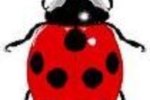For pet lovers with space constraints, many insects make excellent captives and provide hours of enjoyment. Few insects live very long lives, so they also make suitable pets for those who cannot commit years to their care. Be sure to research the biology, natural history, range and diet of any insect you intend to keep so you can provide the bug with a high quality of life.
Warnings
Some insects can inflict painful bites or stings. Always use care when handling such species, and prevent young children from directly interacting with these insects.
Orthopterans
The order Orthoptera includes several different insects that make good pets, such as crickets, grasshoppers and katydids. Some of the most commonly kept species include:
• House crickets (Acheta domestica)
• Field crickets (Gryllus bimaculatus)
• Giant katydids (Stilpnochlora couloniana)
• Malaysian katydids (Ventralla quadrata)
• Migratory locusts (Locusta migratoria)
Roaches
Although roaches are generally considered pests when found living in homes or buildings, some insect enthusiasts keep roaches as pets. Avoid keeping native roaches, which may escape; choose instead among these tropical species, which are unlikely to survive if they escape:
• Madagascan hissing cockroaches (Gromphadorhina portentosa)
• Death’s head roaches (Blaberus craniifer)
• Lobster cockroaches (Nauphoeta cinerea)
• Indian domino cockroaches (Therea petiveriana)
Praying Mantises
Praying mantises have been popular pets for hundreds of years, thanks in part to their beauty and interesting biology. Famous for their predatory prowess, mantises require live insects for food. Among the species are:
• African mantises (Sphodromantis viridis)
• Giant Asian praying mantises (Hierodula membranacea)
• Carolina mantises (Stagmomantis carolina)
• Chinese mantises (Tenodera sinensis)
Beetles
Many beetles make satisfactory pets for insect enthusiasts. Clad in brilliant red, yellow or orange hues, and marked with small black dots, ladybugs (also called ladybirds) are among the most commonly kept beetles. Although they may discharge a foul-smelling yellow liquid when handled, ladybugs are harmless to humans. Some suitable captives include:
• European ladybugs (Coccinella septempunctata)
• Multicolored Asian ladybeetles (Harmonia axyridis)
• Twice-stabbed ladybugs (Chilochorus orbus)
• Mealworms (Tenebrio molitor)
• Super worms (Zophobas morio)
• Rainbow stag beetles (Phalacrognathus muelleri)
• Rhino beetles (Dynastes tityus)
Stick Insects
Several different stick insects make excellent terrarium pets. Most are long, thin insects who dine on plants and rely on their convincing crypsis to avoid predators. Consider these:
• Indian stick insects (Carausius morosus)
• Giant spiny stick insects (Extatosoma tiaratum)
• Small spiny stick insects (Aretaon asperrimus)
• Peruvian fern insects (Oreophoetes peruana)
Aquatic Insects
Many aquatic insects make suitable pets if provided a small aquarium or large jar full of water. Some species can inflict painful bites, so it is wise to use caution when handling larger species. Aquatic insects suitable for captive keeping include:
• Marbled diving beetles (Thermonectes marmoratus)
• Backswimmers (Notonecta glauca)
• Toe biters (Lethocerus spp.)
Lepidopterans
The order Lepidoptera includes butterflies, moths and skippers. While most adult Lepidopterans are impractical to keep as pets, many people enjoy keeping caterpillars and watching them go through the process of metamorphosis. Common captives include:
• Monarch butterflies (Danaus plexippus)
• Painted lady butterflies (Vanessa cardui)
• Silkworms (Bombyx mori)
• Moon moths (Actias selene)
Ants
Social insects, ants are entertaining captives. Some of the most common species are rather easy to keep in a terrarium, but some species -- such as driver ants (Dorylus spp.) -- are impractical to keep as pets. These are better suited to captivity:
• Black garden ants (Lasius niger)
• Red ants (Myrmica rubra)
• Honeypot ants (Myrmecocystus spp.)


